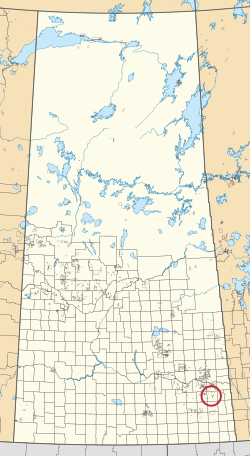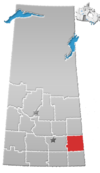Ochapowace 71-70 | |
|---|---|
| Ochapowace Indian Reserve No. 71-70 | |
 Location in Saskatchewan | |
| First Nation | Ochapowace |
| Country | Canada |
| Province | Saskatchewan |
| Area | |
| • Total | 64 ha (158 acres) |
| Population (2016)[2] | |
| • Total | 0 |
| • Density | 0.0/km2 (0.0/sq mi) |
Ochapowace 71-70 is an Indian reserve of the Ochapowace Nation in Saskatchewan.[1][3] It is about 14 kilometres (8.7 mi) south of Whitewood. In the 2016 Canadian Census, it recorded a population of 0 living in 0 of its 0 total private dwellings.[2]
See also
[edit]References
[edit]- ^ a b "Reserve/Settlement/Village Detail". Crown–Indigenous Relations and Northern Affairs Canada. Government of Canada. Retrieved 12 August 2019.
- ^ a b "Census Profile, 2016 Census". Statistics Canada. 8 February 2017. Retrieved 10 August 2019.
- ^ "Canada Lands Survey System - CLSS Map Browser". Natural Resources Canada. Retrieved 9 October 2019.
50°11′19″N 102°15′04″W / 50.1887°N 102.251°W

Well, that’s interesting to know that Psilotum nudum are known as whisk ferns. Psilotum nudum is the commoner species of the two. While the P. flaccidum is a rare species and is found in the tropical islands. Both the species are usually epiphytic in habit and grow upon tree ferns. These species may also be terrestrial and grow in humus or in the crevices of the rocks.
View the detailed Guide of Psilotum nudum: Detailed Study Of Psilotum Nudum (Whisk Fern), Classification, Anatomy, Reproduction